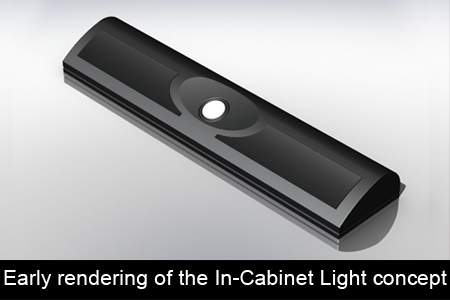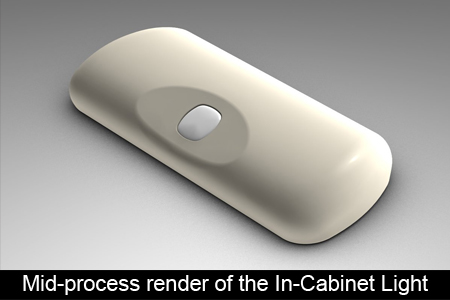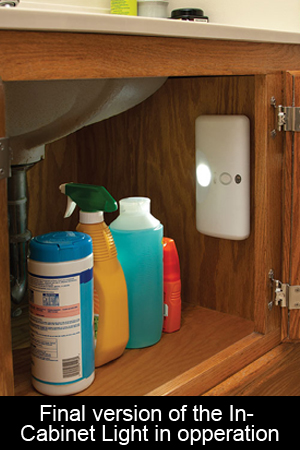 Loading... Please wait...
Loading... Please wait...- Home
- Bright Ideas
- Canadian Customers
-
Blog
- 4 Tips to Make Motion Sensors Work for You
- How Do LEDs Work?
- How Jenesis Reinvented Fire
- How to Dispose of Batteries Properly
- Jenesis Flahslight Lights Up Indiegogo
- Those Darned Motion Activated Faucets
- What do Those Electric Candles Actually Look Like?
- 9 Ways to Avoid Getting Ripped Off on Battery Lighting
- How to Avoid Getting Ripped Off on Battery Lighting – Advanced Course
- Battery Warnings to Take Seriously
- How is Battery Life Calculated?
- How to Use the Deck Marker Light
- How to Use the Glow Fob and Guide Light
- How to Use the In-Cabinet Light
- How to Use the Motion Deck Light
- I Made the In-Cabinet Light
- I Made the Motion Deck Light
- In-Cabinet Light Backstory
- In-Cabinet Light Testing
- Investing in Product Development
- Motion Deck Light Backstory
- What is Low Glow?
- About Us
-
Contact
Popular Brands
The Origin of the In-Cabinet Light
The In-Cabinet Light began humbly as number 26 on a list of product ideas maintained by Jenesis International’s president Brad Jensen. The entry, hand written on a worn spiral notebook reads “kitchen cabinet LED light.” From these beginnings the In-Cabinet Light has become one of the most popular Jenesis products and is the product most commonly found in the homes of the very Jenesis employees who created it.
Like many of Jenesis’ products the In-Cabinet Light was not the first of its kind. Similar items were already in stores across the country. Still, Brad and Jenesis’ lead engineers Kim and Roger felt they could do better. They focused their attention on the mechanism for detecting an open door. Existing products used cumbersome magnetic switches, battery intensive ultrasonic systems, or restrictive infrared sensors. Instead Brad, Kim, and Rodger chose to experiment with an untested solution: a simple, energy efficient, omnidirectional, light sensor.  Brad recalls the first time the new system was tested: “We had never actually tried it in a cabinet, and when we were running the first trial of this circuit we would open the door and the light would be on, and we couldn’t tell if the light was ever off. The light was turning on so quickly it really was just like your refrigerator, and it was a problem for us evaluating the design because we were going ‘that thing’s probably not working.’ So Kim and Rodger ran some wires out of the cabinet with another LED. When the one inside the cabinet would light up the one on the outside of the cabinet would light up. So we could see that in fact, yes, the light turned off. And the amazing thing was that as you opened the door the response was just instantaneous.”
Brad recalls the first time the new system was tested: “We had never actually tried it in a cabinet, and when we were running the first trial of this circuit we would open the door and the light would be on, and we couldn’t tell if the light was ever off. The light was turning on so quickly it really was just like your refrigerator, and it was a problem for us evaluating the design because we were going ‘that thing’s probably not working.’ So Kim and Rodger ran some wires out of the cabinet with another LED. When the one inside the cabinet would light up the one on the outside of the cabinet would light up. So we could see that in fact, yes, the light turned off. And the amazing thing was that as you opened the door the response was just instantaneous.”
This unexpected triumph demonstrated the value of the new product, but right away a problem emerged. If the light outside the cabinet was dim or if the light leaking into the cabinet was high the light could trigger incorrectly. Kim in particular spent a great deal of time trying to find a signal specific to an open door. Eventually he found a solution that could even tell the difference between the door opening and someone turning the room lights on and off outside the cabinet. However, despite Kim’s best efforts, it was still possible for ambient light levels to be so low that the light couldn’t see the open door. To compensate, a button with a low-glow ring was added, allowing the user to find the light in the dark and turn it on manually. A timer function was also added to turn the light off automatically.
“We did have the issue of ‘how do you select a timer that’s long enough so it’s useful, but you don’t waste your battery?’ You’d hate to have half the battery life of the product spent with the lights on when the cabinet doors are closed. We ultimately selected a time of twenty seconds. We thought that that was reasonable for getting into a cabinet and getting out. Now sometimes you’re rearranging things in a cabinet and you need more time. So we changed the software so if the light goes off you can press the button to reactivate it. Our initial thought was to go for another twenty seconds. But we said ‘no, if the automatic light had been turned on and somebody pressed the button, it means that they want the light on longer.’ So rather than having a short cycle that’s kind of frustrating we changed the software to stay on for a minute so you could use it for some longer task. ”
With the inner workings in place, the next step was to present the features in a useful and practical way. A combination adhesive/magnet mounting system was selected to simplify installation and to avoid the need to drill screws into cabinets. Mark Goldy, our product engineer, put in a lot of effort arranging the light sensor, on/off switch, and swiveling light fixture in a way that allowed the light to be installed at any angle on any surface. As the light took on its final shape Brad began to realize that the product had potential beyond its original purpose as a wireless kitchen cabinet light.
“We recognize that there’s a lot of different ways people might use this. Maybe you decide ‘Well, I really like this light, but I don’t really want to use it in a cabinet. I want to use it someplace else.’ And so we have a switch on the back to put it in manual mode and as you press the button it turns on and off. And so maybe you want to use it in a basement or a closet or what happens if the power goes out and I need light?” “In fact, we just had our first dozen pilot production units and it just so happened our power went out at home. So I came over to the office and I grabbed several and for two days we did everything by the light of these products. I put one of them in the bathroom and it gave off enough light to take a shower. Two of them in the living room provided enough light to read comfortably, and we could carry them anywhere. So it was an unexpected field test for the power outage application of our light, and it performed very well.”
“In fact, we just had our first dozen pilot production units and it just so happened our power went out at home. So I came over to the office and I grabbed several and for two days we did everything by the light of these products. I put one of them in the bathroom and it gave off enough light to take a shower. Two of them in the living room provided enough light to read comfortably, and we could carry them anywhere. So it was an unexpected field test for the power outage application of our light, and it performed very well.”
Finally, after many hundreds of hours of design and testing and a few new patents to Jenesis’ credit, the wireless, automatic, battery powered In-Cabinet Light was made available to the public. “The initial concept was to use a photocell to detect light and turn on an LED. Sounds really simple. It actually turns out that it’s really not that easy. In fact you have to have some pretty elaborate software to be able to distinguish different light level situations, and it took quite a lot of work to turn on a light. But that’s what it takes to do a good product, and we think people are going to be really, really happy with it.”
Want to see more? Visit the In-Cabinet Light product page.





